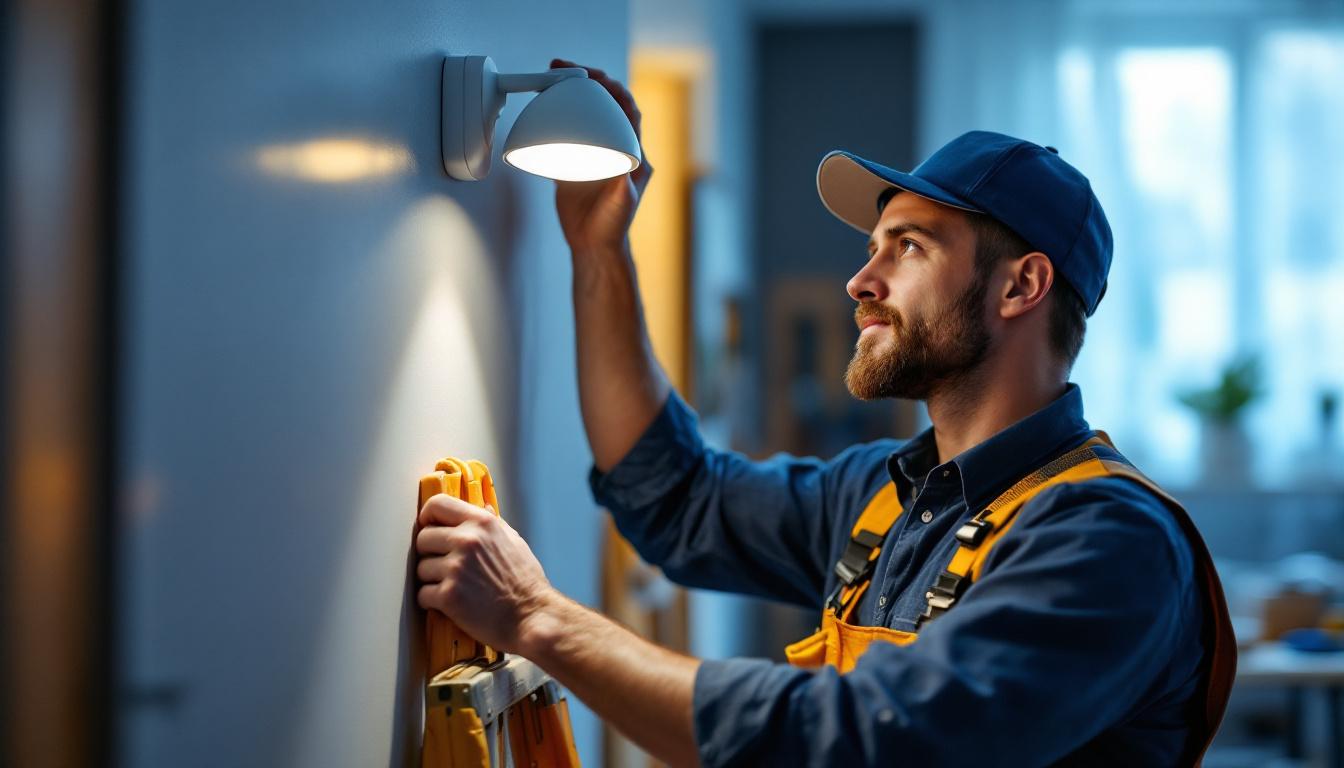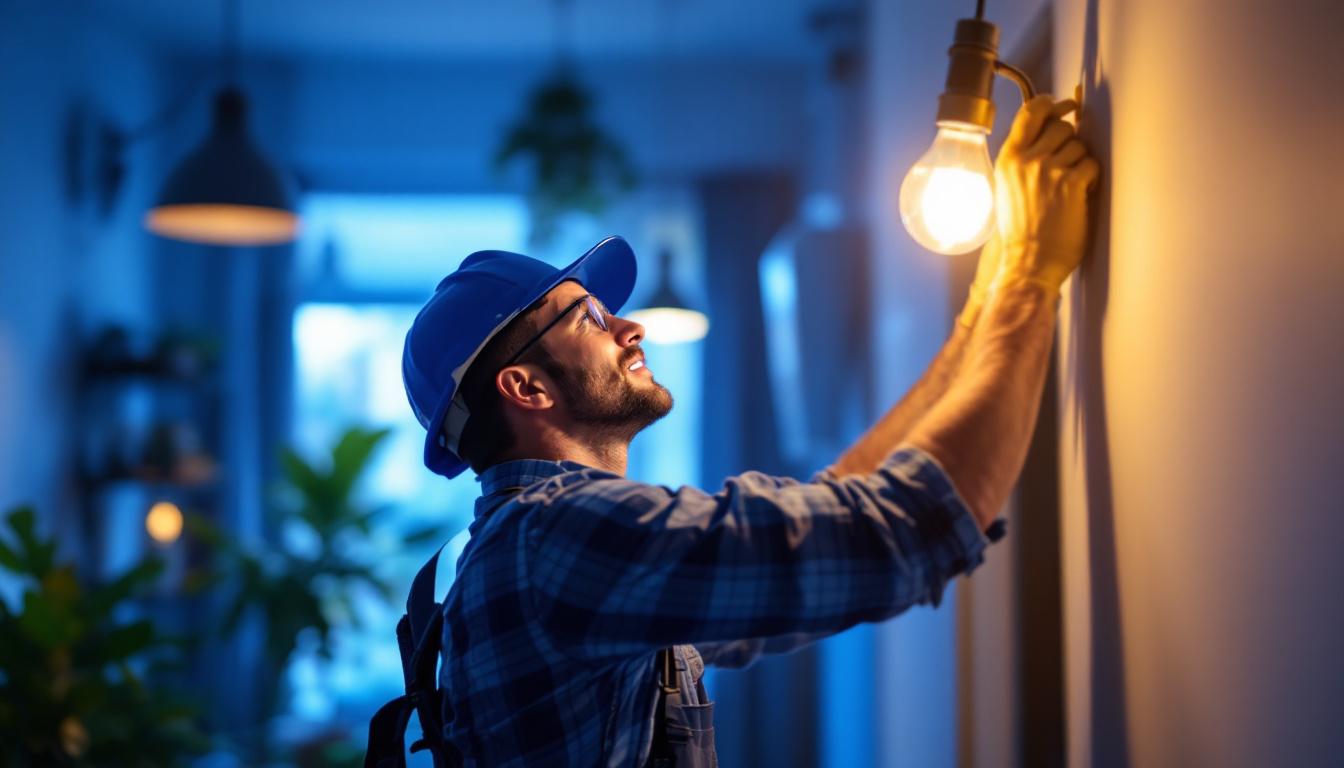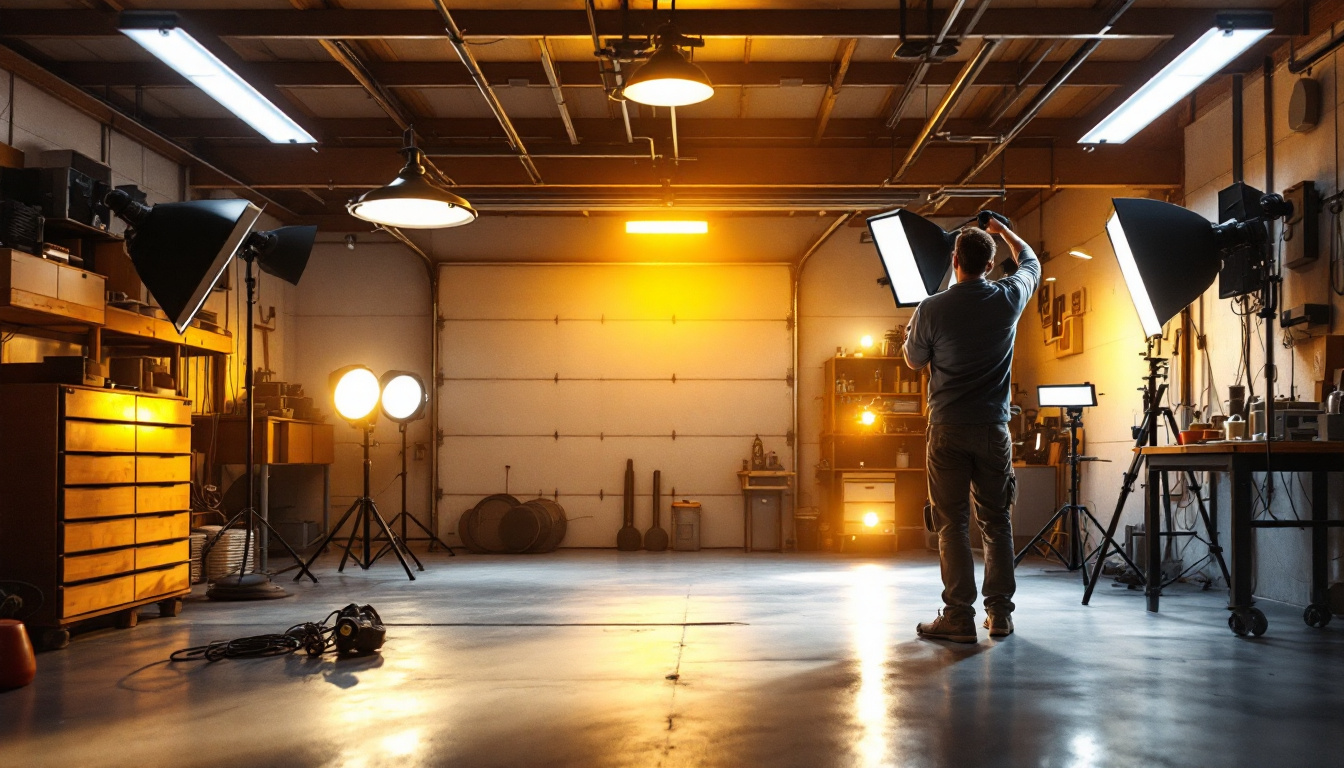
In the ever-evolving world of smart lighting, motion-activated light fixtures have emerged as a popular choice for both residential and commercial applications. For lighting contractors, understanding the intricacies of these fixtures can not only enhance the quality of installations but also improve customer satisfaction. This article delves into various hacks and tips that can help contractors optimize their use of motion-activated light fixtures.
Before diving into hacks, it’s essential to grasp how motion-activated light fixtures operate. These fixtures utilize sensors to detect movement within a specific range, triggering the lights to turn on automatically. This technology not only conserves energy but also enhances security by providing illumination when it’s needed most. The convenience of having lights that respond to movement can significantly improve safety in dark areas, such as driveways, pathways, and entryways, allowing individuals to navigate without stumbling or tripping over obstacles.
Typically, motion sensors can be categorized into two types: passive infrared (PIR) sensors and microwave sensors. PIR sensors detect body heat, making them ideal for indoor applications, while microwave sensors emit waves to sense movement, allowing for broader detection ranges. Understanding these distinctions is crucial for contractors when selecting the appropriate fixture for a given project. Additionally, some advanced models combine both technologies, providing a more reliable and versatile solution that minimizes false triggers while maximizing detection accuracy.
When selecting motion-activated light fixtures, several features should be taken into account. The sensitivity of the sensor, the range of detection, and the duration the light remains on after activation are all critical aspects. Additionally, some fixtures offer adjustable settings, allowing contractors to customize the performance based on the specific needs of the installation site. For instance, in areas with frequent animal movement, a lower sensitivity setting can prevent unnecessary activations, preserving energy and extending the lifespan of the bulbs.
Another important feature is the ability to integrate with smart home systems. Many modern motion-activated fixtures can connect to Wi-Fi or Bluetooth, enabling remote control and automation through smartphone applications. This functionality enhances the user experience and provides added convenience for homeowners. Furthermore, some systems allow for scheduling and geofencing, which means lights can be programmed to turn on or off based on the homeowner’s location or at specific times of day. This level of control not only improves energy efficiency but also adds a layer of sophistication to home security, as lights can mimic occupancy even when residents are away.
Proper installation is vital for ensuring that motion-activated light fixtures work effectively. Here are some practical tips that contractors should consider during the installation process.
The placement of the motion sensor is crucial for maximizing its effectiveness. Ideally, sensors should be installed at a height of 6 to 8 feet, allowing for optimal detection of movement. Additionally, positioning the sensor to face areas with high foot traffic, such as walkways or entry points, can enhance functionality.
Contractors should also be mindful of potential obstructions, such as trees, walls, or furniture, which could block the sensor’s view. Conducting a thorough assessment of the installation area before mounting the fixture can help avoid these issues. Furthermore, it’s beneficial to consider the angle of the sensor; tilting it slightly downward can improve detection range and minimize false triggers caused by passing cars or animals. Testing the sensor’s field of view after installation can also ensure that it covers the intended area effectively.
Ensuring a reliable power supply is essential for the consistent operation of motion-activated light fixtures. Contractors should verify that the existing wiring is compatible with the new fixtures, considering factors such as voltage and amperage. In cases where new wiring is required, following local electrical codes and regulations is paramount.
Additionally, using weatherproof fixtures and wiring for outdoor installations is critical to prevent damage from environmental factors. Selecting high-quality materials can enhance the longevity and reliability of the installation. It’s also advisable to install a surge protector to safeguard against voltage spikes, which can occur during storms or electrical outages. This extra layer of protection can significantly extend the lifespan of the fixtures and maintain their performance over time. Regular maintenance checks, including cleaning the sensor lens and testing the functionality, can further ensure that the system operates at peak efficiency, providing safety and convenience for homeowners.
Incorporating smart features into motion-activated light fixtures can significantly enhance the user experience. Here are some innovative hacks that contractors can implement to elevate their installations.
Many homeowners are increasingly interested in smart home technology. By integrating motion-activated light fixtures with popular smart home systems, contractors can offer clients a seamless and convenient lighting solution. This integration allows users to control their lights remotely, set schedules, and receive notifications when motion is detected.
To achieve this, contractors should familiarize themselves with various smart home platforms and ensure that the fixtures selected are compatible with these systems. Providing clients with a demonstration of how to utilize these features can also enhance their satisfaction and encourage referrals.
Another valuable feature to consider is the ability to dim lights based on ambient light levels. Some motion-activated fixtures come equipped with built-in daylight sensors that adjust the brightness according to the surrounding light conditions. This not only saves energy but also creates a more comfortable environment for users.
Contractors should educate clients on how to adjust these settings to suit their preferences. Offering guidance on optimal dimming levels can help homeowners achieve their desired ambiance while maximizing energy efficiency.
Encouraging clients to conduct routine inspections of their motion-activated fixtures can help identify potential issues before they escalate. This includes checking for dirt or debris on the sensor lens, which can obstruct its functionality. A simple cleaning with a soft cloth can often resolve these issues.
Additionally, contractors should recommend that clients periodically test the motion sensors to ensure they are functioning correctly. This can be done by walking within the sensor’s range and observing whether the lights activate as expected.
Despite the best installation practices, issues may arise with motion-activated light fixtures. Common problems include lights that do not turn on, lights that stay on continuously, or sensors that fail to detect motion. Educating clients on basic troubleshooting steps can empower them to resolve minor issues independently.
For instance, if the lights do not turn on, clients should check the power supply and ensure that the fixture is connected properly. If the lights remain on continuously, adjusting the sensitivity settings or repositioning the sensor may resolve the issue. Providing a troubleshooting guide can be a valuable resource for clients.
As energy efficiency becomes increasingly important, motion-activated light fixtures offer a sustainable lighting solution. By understanding how to maximize their energy-saving potential, contractors can provide added value to their clients.
One of the most effective ways to enhance energy efficiency is by utilizing LED technology in motion-activated fixtures. LEDs consume significantly less energy compared to traditional incandescent bulbs, resulting in lower electricity bills for homeowners. Additionally, LEDs have a longer lifespan, reducing the frequency of replacements.
Contractors should educate clients about the benefits of LED lighting and recommend fixtures that incorporate this technology. Highlighting the long-term cost savings associated with LED usage can further persuade clients to invest in energy-efficient solutions.
Encouraging clients to implement smart scheduling for their motion-activated lights can also enhance energy efficiency. Many smart fixtures allow users to set specific times for lights to turn on or off, reducing unnecessary energy consumption. By promoting this feature, contractors can help clients optimize their lighting usage based on their daily routines.
Providing clients with a simple guide on how to set up these schedules can enhance their experience and ensure they make the most of their motion-activated fixtures.
The landscape of motion-activated lighting is continually evolving, with new technologies and trends emerging regularly. Staying informed about these developments can provide contractors with a competitive edge.
Advancements in sensor technology are paving the way for more sophisticated motion-activated fixtures. Newer sensors are becoming more accurate, with the ability to differentiate between human and animal movement, reducing false activations. This technology not only enhances the user experience but also improves energy efficiency.
Contractors should keep an eye on these advancements and consider incorporating them into their offerings. By staying ahead of the curve, contractors can position themselves as knowledgeable experts in the field of smart lighting.
The integration of motion-activated light fixtures with Internet of Things (IoT) devices is another trend that is gaining traction. This connectivity allows for more comprehensive automation, enabling lights to respond to other smart devices in the home. For example, lights can be programmed to turn on when a smart doorbell detects someone approaching.
Contractors should explore partnerships with IoT manufacturers to provide clients with a holistic smart home experience. By offering integrated solutions, contractors can enhance their service offerings and attract a broader clientele.
Motion-activated light fixtures represent a significant advancement in lighting technology, offering convenience, energy efficiency, and enhanced security. For lighting contractors, mastering the installation, maintenance, and integration of these fixtures is essential for delivering exceptional service to clients.
By implementing the hacks and tips outlined in this article, contractors can optimize their installations, enhance user experiences, and stay ahead of industry trends. As the demand for smart lighting solutions continues to grow, those who adapt and innovate will undoubtedly thrive in this dynamic market.
Ready to take your smart lighting installations to the next level? At LumenWholesale, we provide lighting contractors like you with the highest quality, spec-grade motion-activated light fixtures at unbeatable wholesale prices. Say goodbye to local distributor markups and hello to a vast selection of reliable, high-performance lighting that meets the most rigorous industry standards. Plus, with free shipping on bulk orders, you can stock up on premium lighting solutions without worrying about hidden fees or compromises. Elevate your projects with the perfect blend of quality, affordability, and convenience. Discover the best value in wholesale lighting by visiting LumenWholesale today.

Discover expert tips and insights on Type R light bulbs tailored for lighting contractors.

Discover the top strategies lighting contractors use to illuminate spaces effectively and efficiently.

Discover effective strategies to train your team in using LED light switches to enhance energy efficiency and workplace productivity.

Discover the top lighting solutions for garages that can elevate your contracting business.